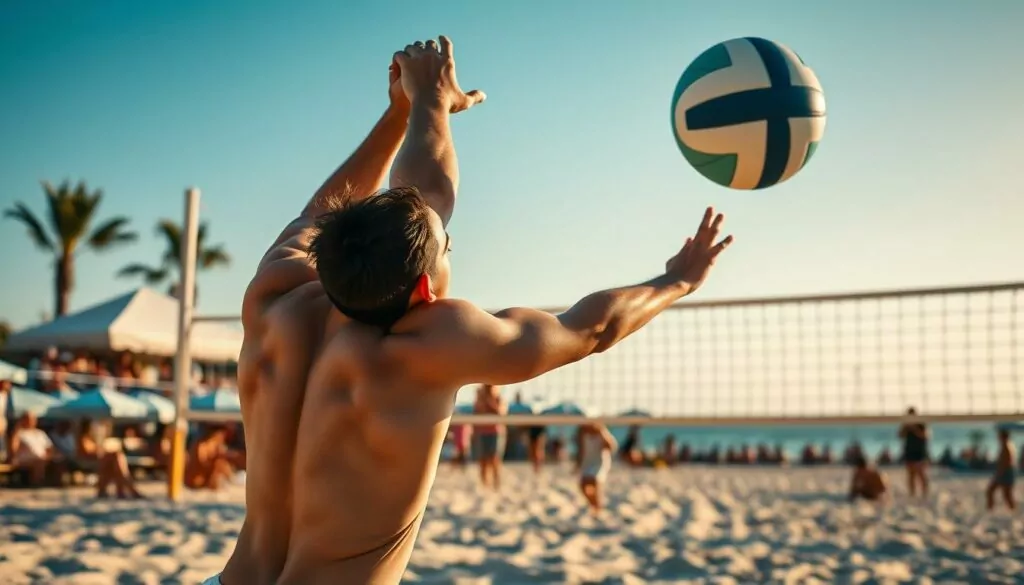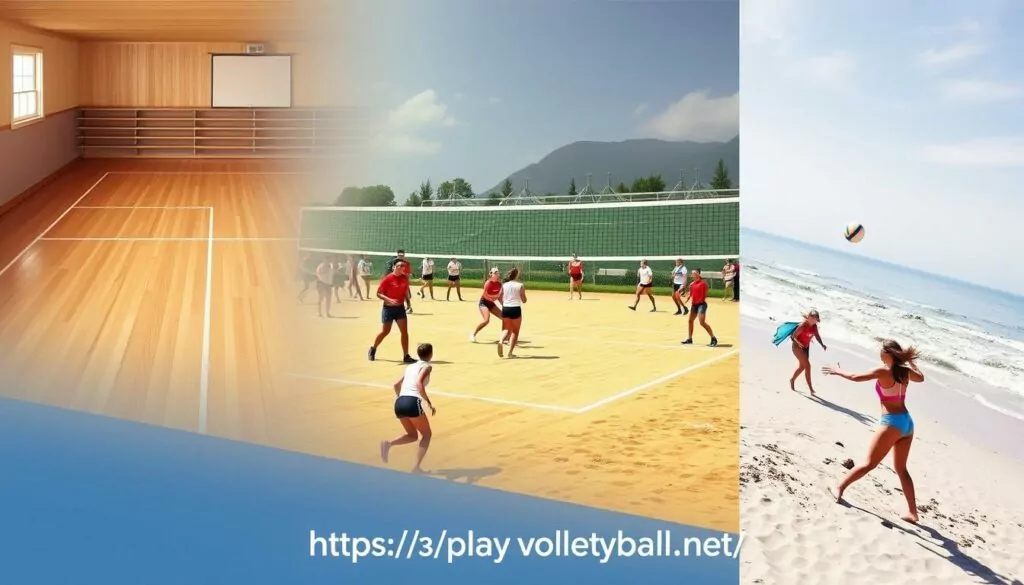I’ll never forget the day I stepped onto the volleyball court for my first high school game. As I approached the service line, my palms were sweaty, and my heart raced. I tossed the ball up, swung my arm, and… completely whiffed. The ball dropped harmlessly to the floor, and I felt my cheeks burn with embarrassment. That moment sparked my journey to mastering the overhand serve in volleyball, a skill that would transform my game and boost my confidence on the court.
The overhand serve is a cornerstone of volleyball serving technique. It’s not just about getting the ball over the net; it’s about creating opportunities and putting pressure on your opponents. As I discovered, a well-executed overhand serve can be a game-changer, turning a ordinary player into a formidable force on the court.
In this guide, I’ll share the insights I’ve gained from years of practice and competition. We’ll explore the fundamentals, dig into advanced techniques, and tackle common mistakes. Whether you’re a beginner looking to improve or an experienced player aiming to refine your skills, this article will help you on your path to mastering the overhand serve in volleyball.
Key Takeaways
- The overhand serve is a crucial skill in volleyball that can significantly impact game outcomes
- Proper body positioning and ball toss technique are fundamental to a successful serve
- Consistent practice and targeted drills are essential for improving serving power and accuracy
- Advanced serving variations can add versatility to your game
- Overcoming mental challenges is as important as perfecting physical technique
Understanding the Fundamentals of Overhand Serving
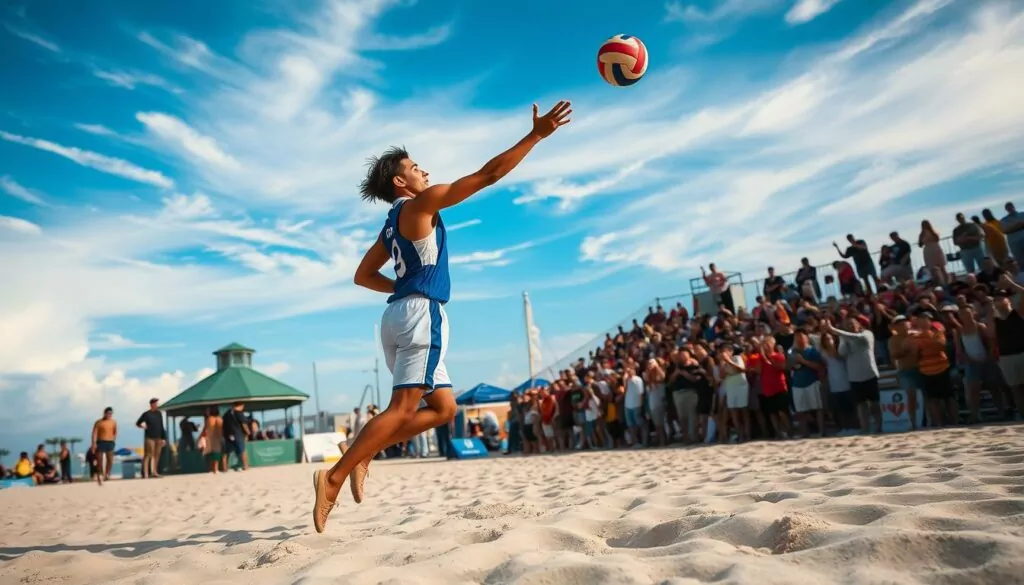
Mastering the overhand serve is crucial for volleyball success. I’ll break down the key components to help you improve your technique. Let’s dive into the basics of body mechanics, ball toss, and follow-through.
Basic Mechanics and Body Positioning
Proper serving footwork is the foundation of a powerful serve. Start with your feet shoulder-width apart, non-hitting foot slightly forward. Shift your weight back as you prepare to serve. This stance gives you stability and power for your serving arm swing.
Ball Toss Technique and Timing
The ball toss is critical for a consistent serve. Hold the ball in front of you with your non-hitting hand. Toss it up about 2 feet above your hitting hand’s reach. Practice your toss separately from hitting to perfect your timing. A steady toss leads to better contact and control.
Contact Point and Follow-Through
When practicing overhand serve drills, focus on the contact point. Hit the ball at its highest point, slightly in front of your body. Your serving arm swing should be smooth and powerful. After contact, follow through by bringing your arm down across your body. This motion adds power and direction to your serve.
Remember, consistency is key. Regular practice of these fundamentals will significantly improve your overhand serve. Start with basic drills and gradually increase complexity as you gain confidence in your technique.
Mastering the Overhand Serve in Volleyball
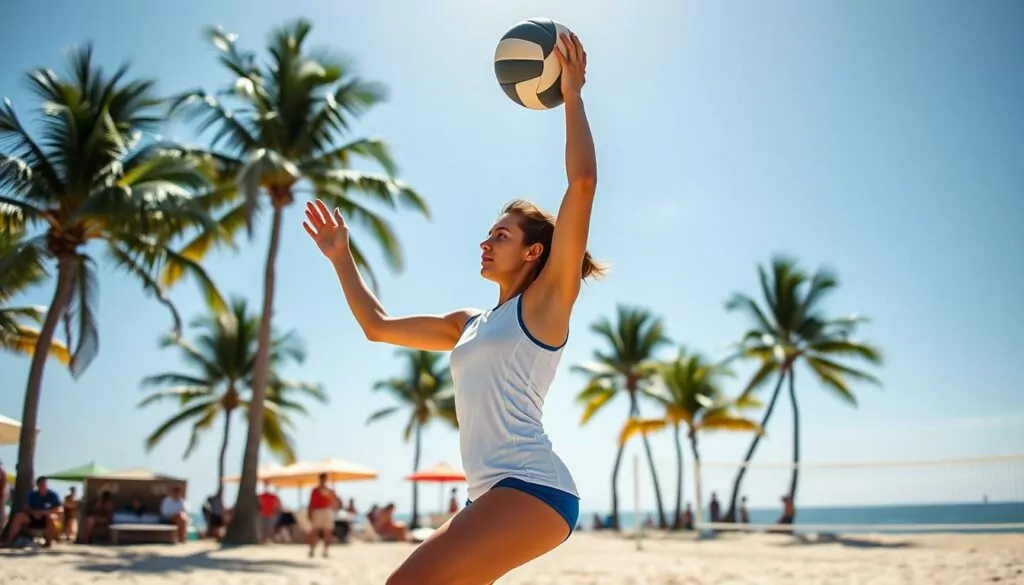
I’ve found that mastering the overhand serve is crucial for any volleyball player looking to dominate the court. Through years of practice and coaching, I’ve gathered some valuable volleyball serving tips to help you improve your game.
First, focus on your stance. Stand with your feet shoulder-width apart, weight slightly forward. This position gives you a stable base for a powerful serve.
Next, perfect your toss. Consistency is key for serving accuracy. Toss the ball about 1-2 feet in front of you and slightly to the right (for right-handed players). This placement allows for optimal contact.
When striking the ball, aim for the top back portion. This contact point creates topspin, increasing your serve’s power and accuracy. Remember to follow through with your arm swing for maximum effectiveness.
“The secret to a great serve is repetition. Practice until it becomes second nature,” – Karch Kiraly, Olympic gold medalist.
To track your progress, use this serving accuracy drill:
| Zone | Points | Target Area |
|---|---|---|
| 1 | 3 | Back left corner |
| 6 | 2 | Back center |
| 5 | 3 | Back right corner |
| Other | 1 | Any in-bounds area |
Aim for these zones during practice to improve your serving accuracy. Remember, consistency and practice are key to mastering the overhand serve in volleyball.
Essential Drills to Improve Your Serving Power
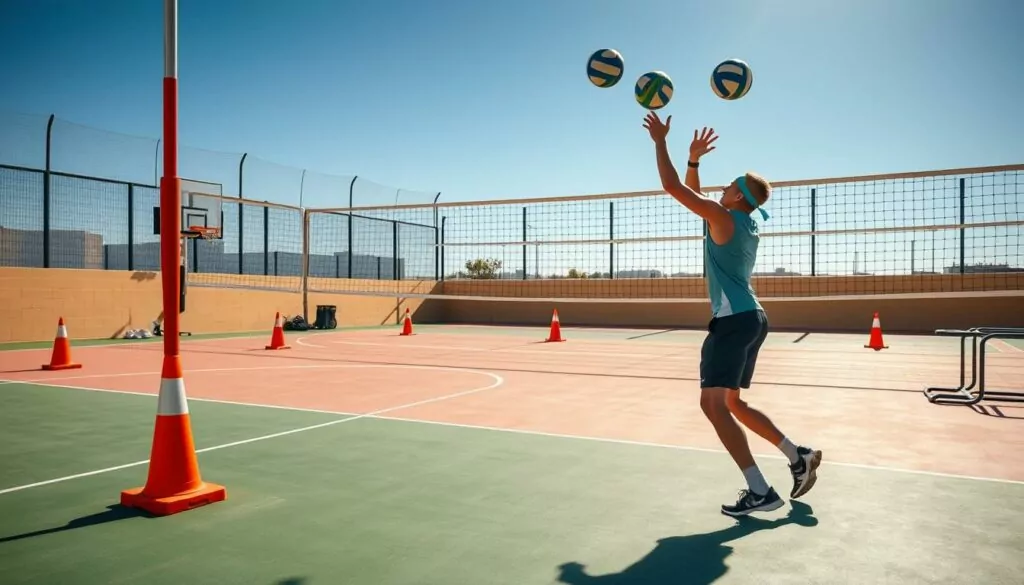
I’ve discovered some great overhand serve drills that can boost your serving power. These exercises are perfect for players looking to up their game. Let’s dive into some effective techniques you can practice on your own or with teammates.
Wall Practice Exercises
Wall practice is a simple yet powerful way to enhance your serve. Stand about 15 feet from a wall and serve the ball against it. Focus on your arm swing and contact point. Gradually increase the distance as you improve. This drill helps you build consistency and control.
Target Training Techniques
Set up targets on the opposite court using cones or hula hoops. Start with larger targets and make them smaller as your accuracy improves. This drill sharpens your precision while maintaining serving power.
Progressive Distance Training
Begin serving from the 10-foot line and gradually move back as you successfully hit your targets. This drill builds arm strength and helps you adjust your technique for different court positions.
Power Development Drills
To increase serving power, try medicine ball throws. Stand with your feet shoulder-width apart and throw a medicine ball overhead, mimicking your serving motion. This exercise strengthens the muscles used in serving.
| Drill | Focus Area | Repetitions |
|---|---|---|
| Wall Practice | Consistency | 20 serves |
| Target Training | Accuracy | 15 serves per target |
| Progressive Distance | Adaptability | 10 serves per position |
| Medicine Ball Throws | Power | 3 sets of 10 throws |
Incorporate these drills into your practice routine to see significant improvements in your serving power and accuracy. Remember, consistency is key in mastering the overhand serve.
Advanced Serving Techniques and Variations
I’ve mastered the basics, and now it’s time to explore advanced serving techniques. These powerful moves can give you an edge on the court. Let’s dive into two game-changing serves: the topspin serve and the jump serve.
The topspin serve is a formidable weapon in volleyball. It creates a challenging trajectory for opponents to receive. To execute this serve, I focus on hitting the ball with an upward motion, creating forward spin. This spin causes the ball to drop sharply as it crosses the net, making it difficult to predict and return.
Jump serve mechanics involve a different approach. I take a few steps back from the end line, toss the ball high, and time my jump to hit it at its peak. This technique allows for greater power and a steeper angle of attack. The key is maintaining balance and control throughout the motion.
| Serve Type | Key Technique | Advantage | Challenge |
|---|---|---|---|
| Topspin Serve | Upward contact motion | Sharp ball drop | Requires precise control |
| Jump Serve | Timing jump with toss | Increased power | Demands perfect coordination |
Both serves require practice to perfect. I incorporate them into my game strategically, keeping opponents guessing. Remember, power isn’t everything – accuracy and consistency are crucial for these advanced techniques to be truly effective.
Common Mistakes and Troubleshooting
As a volleyball player, I’ve encountered my fair share of serving challenges. Let’s dive into some common issues and how to fix them, improving your serving accuracy along the way.
Ball Toss Issues and Solutions
A consistent ball toss is crucial for a good serve. If your toss is too high or low, try this volleyball serving tip: practice tossing the ball to the same spot repeatedly without hitting it. Aim for a toss that reaches just above your hitting hand’s reach.
Timing Problems and Fixes
Timing can make or break your serve. If you’re hitting too early or late, focus on your approach. Start your steps as the ball reaches its peak. This simple adjustment can dramatically improve your serving accuracy.
Power vs Accuracy Balance
Finding the sweet spot between power and accuracy is tricky. I’ve learned that focusing on a clean contact point is key. Start with slower, controlled serves and gradually increase power as your accuracy improves.
Mental Game Challenges
Serving under pressure can be daunting. To overcome this, I use a pre-serve routine. Take a deep breath, visualize a successful serve, and focus on your target. This mental preparation can boost your confidence and serving performance.
“The serve is the only skill in volleyball where you have complete control. Master it, and you control the game.”
Remember, perfecting your serve takes time. Keep practicing these volleyball serving tips, and you’ll see improvements in both power and accuracy.
Conclusion
Mastering the overhand serve in volleyball takes time and dedication. I’ve covered the key elements, from proper technique to advanced drills, to help you improve your serving game. Remember, consistent practice is crucial for developing a powerful and accurate overhand serve.
As you work on your skills, focus on perfecting your ball toss, timing, and follow-through. These fundamentals form the backbone of a strong serve. Don’t forget to incorporate the drills we discussed, like wall practice and target training, into your routine. They’ll help you build strength and precision.
Keep in mind that mastering the overhand serve in volleyball is a journey. You might face challenges along the way, but don’t get discouraged. Stay patient, maintain a positive mindset, and celebrate small victories. With regular practice and attention to detail, you’ll see significant improvements in your serving ability. Now, it’s time to hit the court and start working on your overhand serve!
